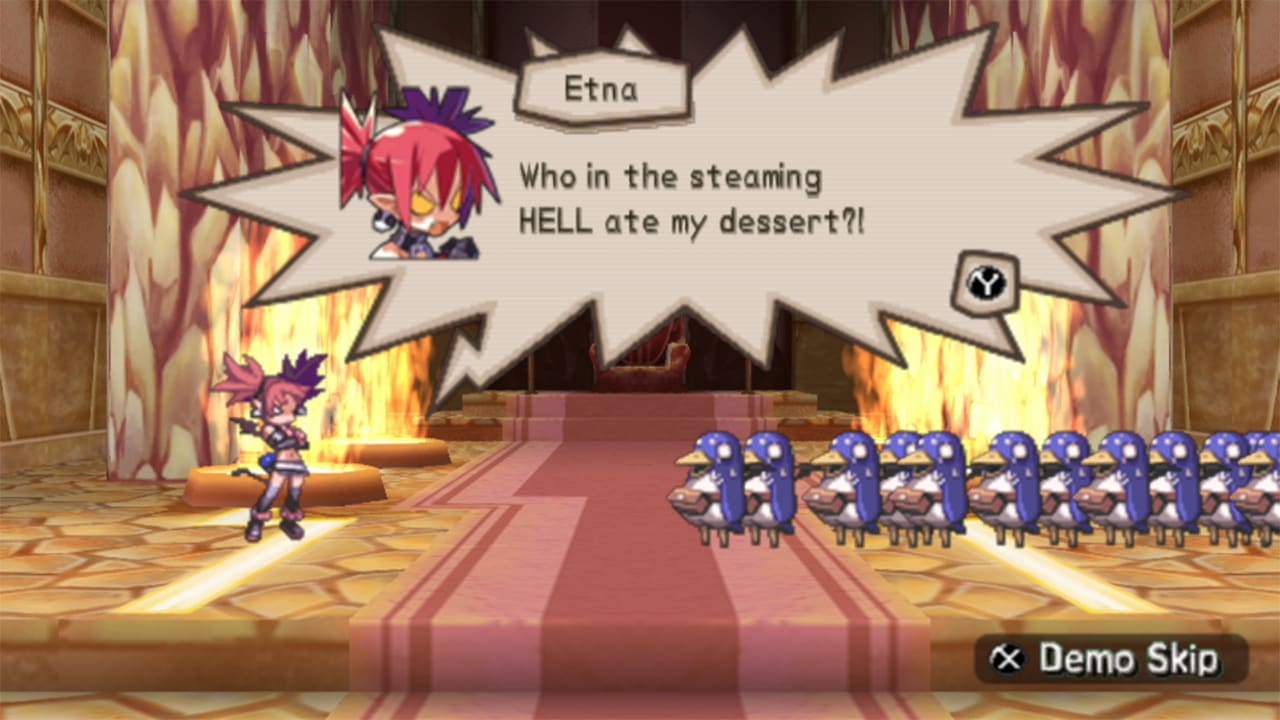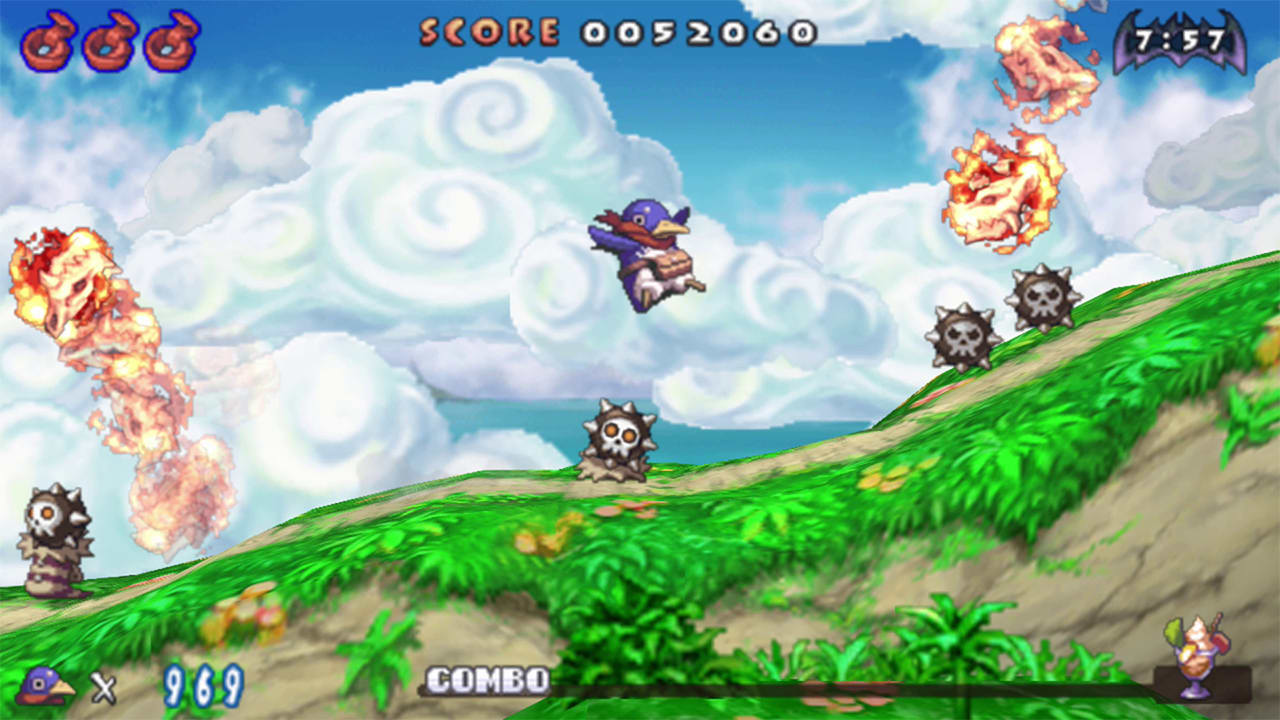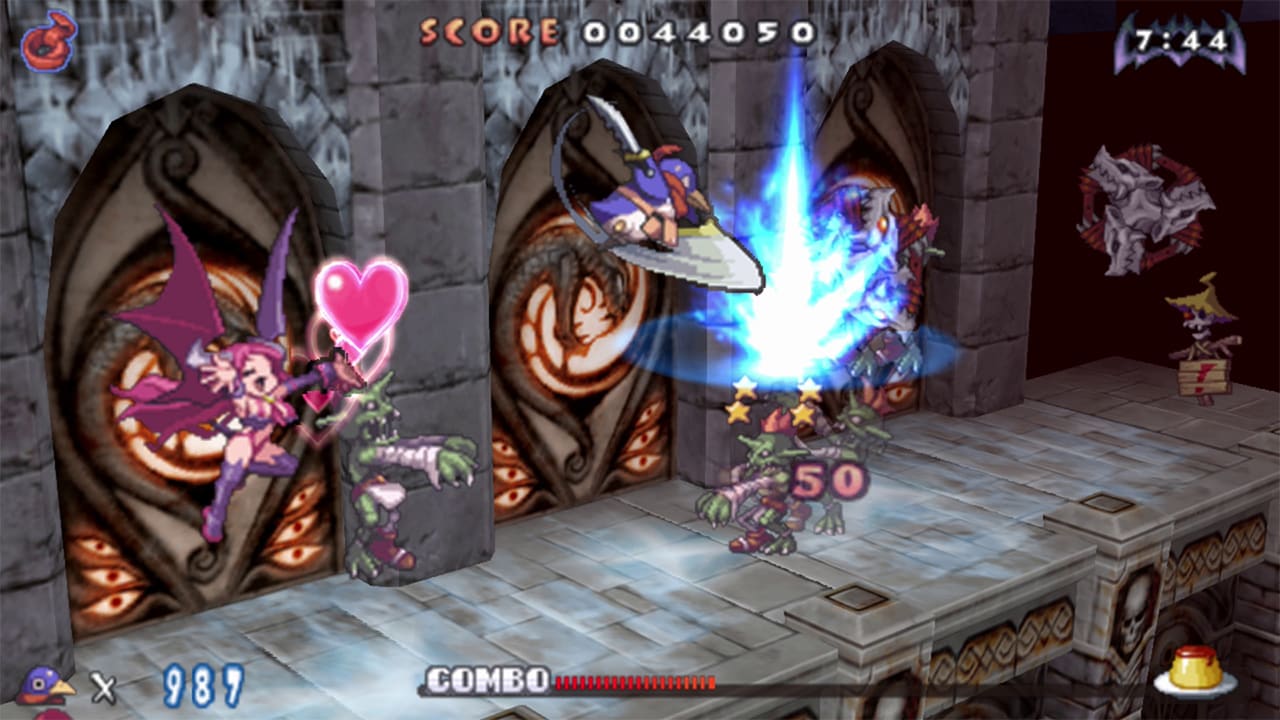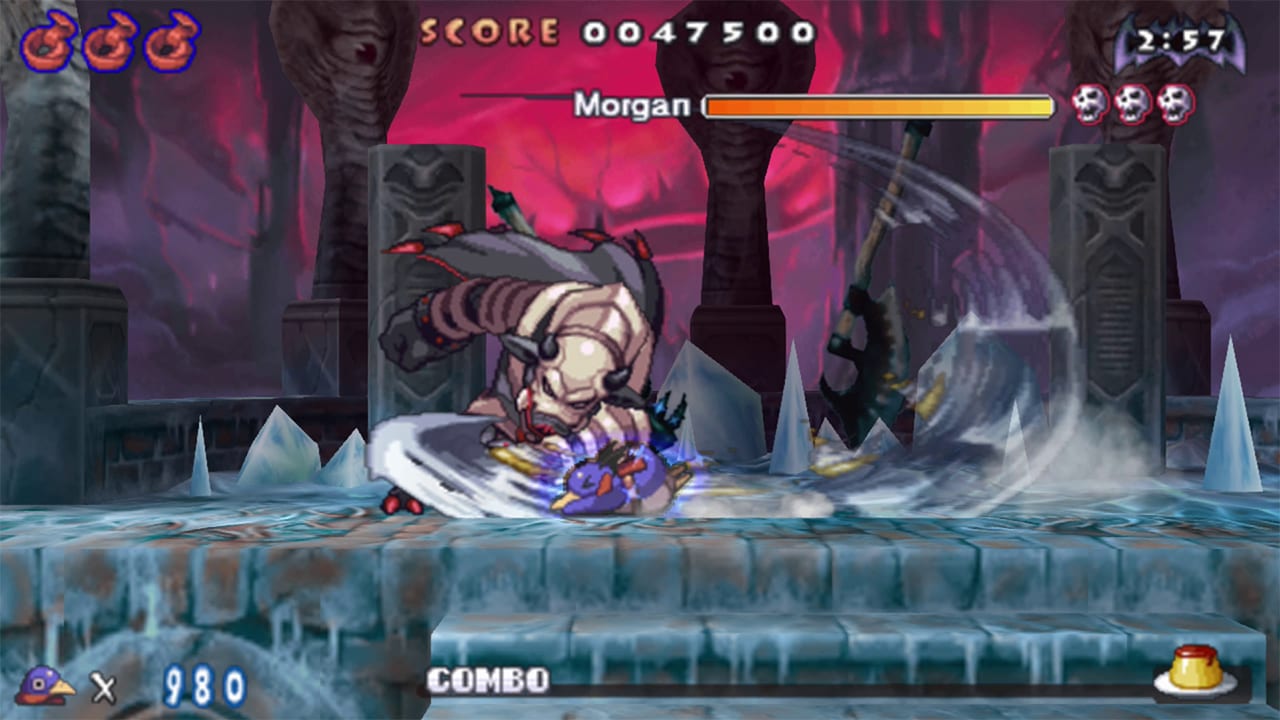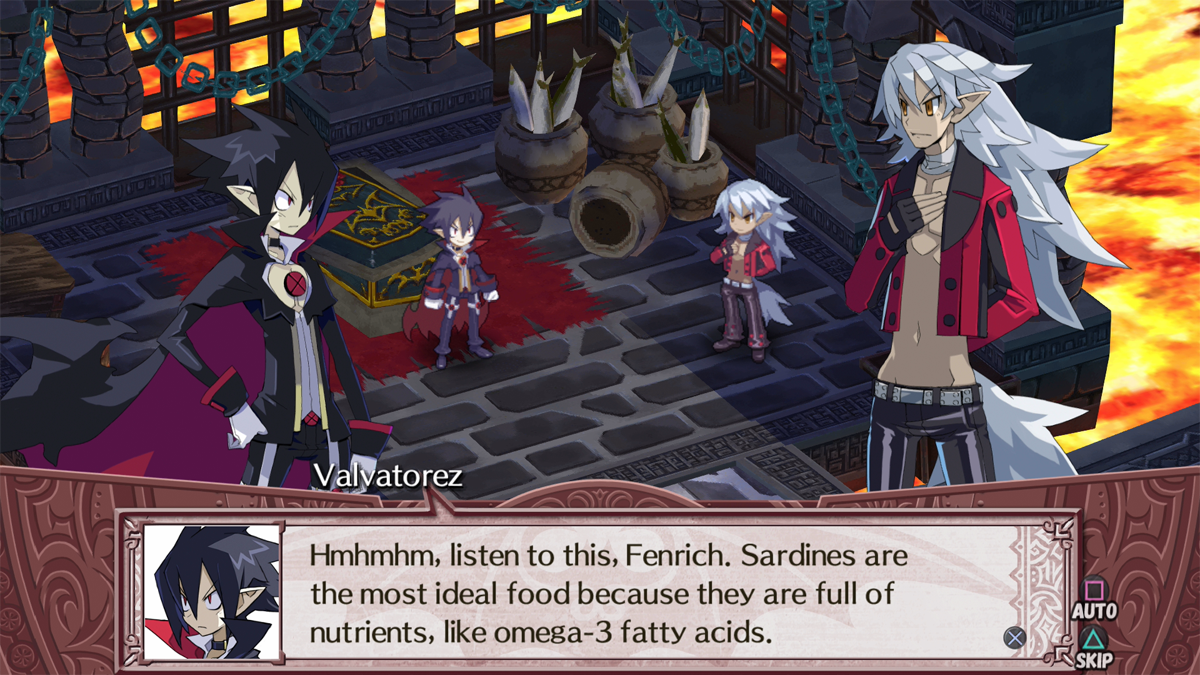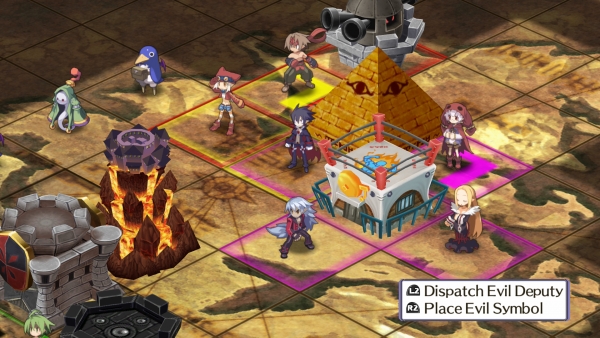Okay, so this was part of my Disgaea 5 writeup, but it ended up being several paragraphs long, and not quite fitting the flow, and also having story spoilers for both games. In the interest of not doing that, I’ve moved it over here. What I want to talk about here is the difference in story pacing between 4 and 5, a specific mechanical reason that they end up feeling different, and why it leads to me liking 4’s writing and story more.
Emizel is one of the primary side characters in Disgaea 4. He’s the son of the President of the Netherworld, and functions as an antagonist for the first few chapters of the story. After his father declares him dead for various political reasons, he joins the player’s party, still remaining fairly obstinate about the state of things, and often still taunted and mocked by the rest of the group.
However, by the time the group actually stages their coup, he’s firmly a member of the party. When an enemy general berates Emizel for betraying his father, other members of the party step up to defend him.
Compare this to Zeroken. Zeroken serves a somewhat similar role in Disgaea 5, in that he’s a minor NPC who joins the main party. His tragic backstory is that he was a member of the Lost, Void Dark’s evil army who got taught martial arts by another demon he admired, and then fled the Lost army. He serves a similar role to Emizel in that he’s one of the weakest members of the group, constantly gets dunked on, and is overall seen as kind of a dweeb.
His big moment is when he “Masters his own heart” allowing him to perform a purification ritual to try to save someone. And after this, he’s brave as opposed to cowardly. And that’s about it.
It’s pretty boring, but it does make sense when you look at how the Disgaea 5 character development often also includes a power-up or the character getting an Overload. Since Disgaea 4 doesn’t use the Overload system, there’s no point where any of the characters get a dramatic mechanical boost as a result of story progression in this manner.
So, here’s the thing: the Overload buffs that the characters get are cool. Zerokens’s Superluminal Wolf which creates fully functional copies of himself is one of my favorite things in Disgaea 5. It’s an ultimate that simultaneously breaks a bunch of standard tactics conventions, and gives massive amounts of utility.
But because of how it’s given to him, his character development feels cheapened. Instead of the slower change that Emizel gets, we just see Zeroken power up, and then his arc is more or less… done.
And I get it. Giving a character a brand new power at a clutch moment is cool. But for me it cheapened the arc of basically all of these characters. Emizel doesn’t ever become super Emizel, or anything. Instead, he has a much slower grind of changing. And I liked that more.




